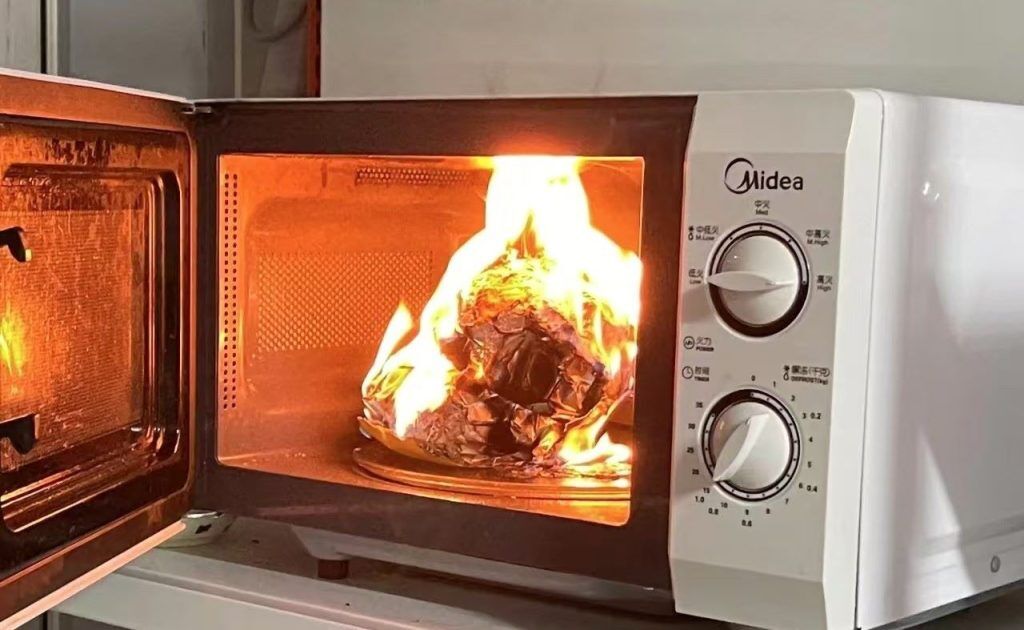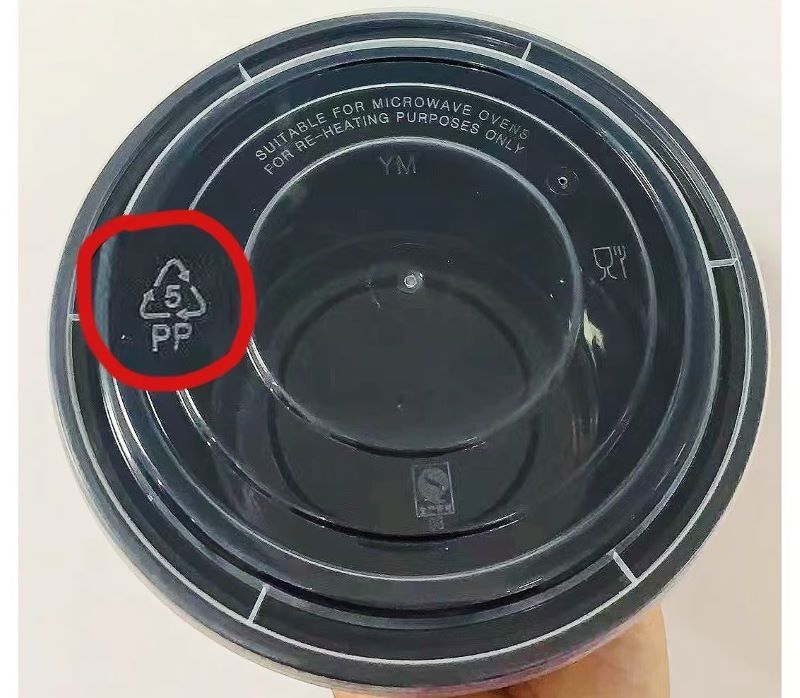In today’s fast-paced world, disposable containers have become a staple for food storage and reheating. But when it comes to using them in the microwave, not all materials are created equal. For consumers and businesses, understanding which materials are microwave-safe is crucial—not just for convenience, but also for health and environmental reasons. In this blog, we’ll dive deep into the world of microwave-safe disposable containers, with a special focus on sugarcane fiber packaging, a sustainable alternative that’s gaining popularity worldwide.
Why Microwave Safety Matters

Microwaving food in the wrong type of container can lead to a host of problems: melted plastic, chemical leaching, or even fires. For businesses in the food packaging industry, offering microwave-safe options isn’t just a value-added feature—it’s a necessity. Consumers are increasingly looking for packaging that aligns with their health-conscious and eco-friendly lifestyles.
Benefits of Microwavable Disposable Containers for Consumers
If you’re a customer or running a food business, these containers can make your life a whole lot easier.
Convenience and Time-Saving
Microwavable containers save time – period.
Pop your food in, heat it up, and eat. No need to fuss around with different plates or dishes.
Versatility for Different Foods
From soups to sandwiches, microwavable containers handle all types of food.
They’re designed for:
- Takeaways
- Meal prep
- Quick reheating
What Makes a Material Microwave-Safe
Microwave-safe containers are made to withstand the unique way that microwaves heat food. These materials are able to endure microwave energy without degrading, melting or leaching toxic chemicals into your meal. This is why it’s so important to understand what exactly makes a material safe for microwave use.
At the core of what makes a material safe for microwaving are four key qualities:
- Heat Resistance (Thermal Stability):
The material has to handle the heat generated by the food.
Think of it as a container’s ability to keep its cool
without deforming or melting.
This is its thermal stability. - Microwave Transparency:
Microwaves need to get to your food to cook it.
The container should allow microwaves to pass through it
instead of blocking or absorbing them. - No Metal Content:
This is a big one.
Metal reflects microwaves,
which can cause sparks,
arcs,
and even damage your microwave.
So,
absolutely no metal,
foil,
or cookware with metallic trims. - Non-Reactivity (Material Safety):
You don’t want the container to leach harmful chemicals into your food when heated.
Material safety means it remains non-reactive.
Look for BPA-free plastics
and make sure it’s marked as microwave-safe
Microwave-Safe Materials: What Works and What Doesn’t
Let’s break down the most common materials used in disposable containers and their suitability for microwave use:
1. Polypropylene (PP, Plastic #5)

- Why It’s Safe: PP is heat-resistant and can withstand temperatures up to 120°C (248°F) or higher, making it a popular choice for microwaveable food containers.
- What to Look For: Check for the “PP5” or “Microwave Safe” label on the bottom of the container.
- Limitations: Avoid prolonged high-heat use, as it can cause warping. Also, remove plastic lids, as they may not be PP.
- Eco Note: While PP is recyclable, it’s still a petroleum-based plastic, which raises concerns about its environmental impact.
2. Paper Containers (Uncoated or PE-Coated)
- Why It’s Safe: Plain paper or paper coated with a thin layer of polyethylene (PE) can be used for short microwave sessions.
- What to Look For: Ensure the container is labeled “Microwave Safe.” Avoid wax-coated or aluminum-lined paper products, as they can melt or catch fire.
- Limitations: Paper containers are prone to becoming soggy or brittle when overheated.
- Eco Note: While paper is biodegradable, PE-coated options are less eco-friendly due to the plastic layer.
3. Sugarcane Fiber (Bagasse)
- Why It’s Safe: Sugarcane fiber, a byproduct of sugar production, is naturally sturdy and heat-resistant. Many sugarcane fiber containers are designed to withstand microwave temperatures for short periods.
- What to Look For: Always check for a “Microwave Safe” label, as not all sugarcane fiber products are created equal.
- Limitations: Avoid extended high-heat use, as excessive heat can cause the material to weaken or char.
- Eco Note: Sugarcane fiber is 100% biodegradable, compostable, and made from renewable resources, making it a standout choice for environmentally conscious businesses and consumers.
4. Bamboo and Palm Leaf Containers
- Why It’s Safe: These are natural materials, so they typically don’t have the nasty chemicals that can leach into your food.
- What to Look For:Make sure they’re plain and free from any coatings, glues, or metallic accents. Also, check that they’re labelled as “microwave-safe” or suitable for microwave use.
- Limitations: Short bursts only! These materials can dry out or become less durable with repeated use. They’re better for reheating than cooking. Don’t expect them to hold up like your glass containers.
- Eco Note: They’re generally more environmentally friendly because they’re biodegradable.
5. Crystallized Polyethylene Terephthalate (C-PET) Containers
- Why They’re Safe: C-PET is designed to handle extreme temperatures
- What to Look For: Check for the “C-PET” label and microwave-safe symbol.
- Limitations: None, C-PET can withstand high temperatures and is suitable for microwave and oven use
- Eco Note:While recyclable, it’s still plastic, so proper disposal is key.So, there you have it!
Why Sugarcane Fiber Stands Out
Sugarcane fiber, also known as bagasse, is a game-changer in the world of disposable packaging. Here’s why:
- Sustainability: It’s made from the fibrous residue left after extracting juice from sugarcane, turning waste into a valuable resource.
- Microwave Safety: When properly manufactured, sugarcane fiber containers can handle microwave heat without compromising their integrity.
- Eco-Friendly Disposal: Unlike plastic, sugarcane fiber is fully compostable, breaking down into organic matter within months.
- Sturdiness: It’s more durable than paper and can handle both hot and cold foods without leaking or breaking.
For businesses, offering sugarcane fiber packaging isn’t just about meeting consumer demand—it’s about leading the charge toward a more sustainable future.
Materials to Avoid in the Microwave
Not all containers are made the same, having an idea of which materials to steer clear of will protect your food, your health, and maybe even your microwave from harm. Here’s a closer look at what to avoid microwaving.
Metal containers should never, under any circumstances, go in the microwave. Additionally, metals reflect microwave energy instead of absorbing it, which leads to sparks and potentially fires. That’s not limited to just stiff metal containers either, as it extends to things such as aluminum foil or metal lids. Any metallic surface has been known to cause electrical arcs, possibly destroying your microwave, or starting a deadly fire.
Plastics that aren’t marked as microwave-safe are especially dangerous. Even worse, these containers can leach dangerous endocrine-disrupting chemicals, like bisphenol A (BPA) and phthalates, into your meals when microwaved. Research has associated these substances with health issues such as obesity and reproductive harm.
In addition, steer clear of all plastics with the recycling codes #3, #6 and #7. Materials often include polyvinyl chloride (PVC), polystyrene (Styrofoam) and other mixed plastics. This is because under short-term exposure to heat, these materials can leach toxic compounds, including endocrine disruptors. Styrofoam takeaway boxes are a huge danger. They melt in the microwave and leach styrene, which is known to be a likely carcinogen.
While ceramics and stoneware may appear as safe options, not all are microwave-safe. When non-microwave-safe ceramics are made, they can absorb moisture that can cause cracking or even shattering of the material when microwaved. Further, anything with metallic trim or accents should be an automatic no-go, too. Even a seemingly innocuous thin decorative metallic line can lead to sparking, endangering both your food and microwave.
Tips for Microwave Use with Disposable Containers
Whether you’re using sugarcane fiber or another microwave-safe material, follow these best practices:
- Check Labels: Always look for the “Microwave Safe” symbol.
- Vent the Container: Remove lids or leave a small opening to allow steam to escape.
- Use Medium Heat: Avoid high settings to prevent warping or charring.
- Monitor Heating Time: Shorter intervals are safer, especially with eco-friendly materials like sugarcane fiber.
- Transfer When in Doubt: If you’re unsure about a container’s safety, transfer food to a glass or ceramic dish.
Conclusion
In today’s world, microwavable disposable containers are about more than just convenience. They’re about meeting customer needs, cutting down on clean-up time, and making eco-friendly choices.Materials such as bagasse, plastic that is labeled microwave-safe, bamboo, are good options.
Avoid any containers that are foam, metal, or plastic without microwave-safe labeling. They can cause obstructions and cause destruction. It’s always best to look for a label or reheating direction before microwaving food.
At InNature Pack, we’re proud to offer high-quality sugarcane fiber packaging solutions that meet the needs of modern consumers and businesses alike. Explore our product line today and join the movement toward sustainable packaging!
Ready to make the switch to eco-friendly, microwave-safe packaging? Contact us today to learn more about our sugarcane fiber products and how they can benefit your business.
Frequently Asked Questions
What materials are considered microwave-safe?
In general, bagasse, bamboo and microwave-safe plastic materials are safe to use in the microwave. Check for any printed labels or symbols that say it’s “microwave-safe.
What materials should never go in the microwave?
Avoid aluminum foil, styrofoam containers, and those made from #3 PVC or #6 polystyrene, as these materials can melt or catch fire, posing a safety hazard by leaching toxic chemicals into your food.
How can I tell if a disposable container is microwave-safe?
Look for labels or markings on the container that indicate it’s microwave-safe. If unsure, check with the manufacturer.
What are the risks of using unsafe materials in the microwave?
Unsafe materials, such as certain plastics, can melt or leach toxic chemicals, posing a safety hazard to your health and ruining your microwave.
Can I use microwavable disposable containers in the oven?
It depends on the material. Paper and some biodegradable containers may not be suitable for the oven. Always check the specifications.
Are there any microwavable disposable containers for hot liquids?
Yes, some containers, like those made from plastic or bagasse, are designed to handle both hot and cold foods, including liquids.
Can microwavable disposable containers be reused?
Most microwavable disposable containers are intended for one-time use. However, some are reusable if properly cared for.
Curious about which materials are suitable for freezing?
Please refer to this blog post of ours.